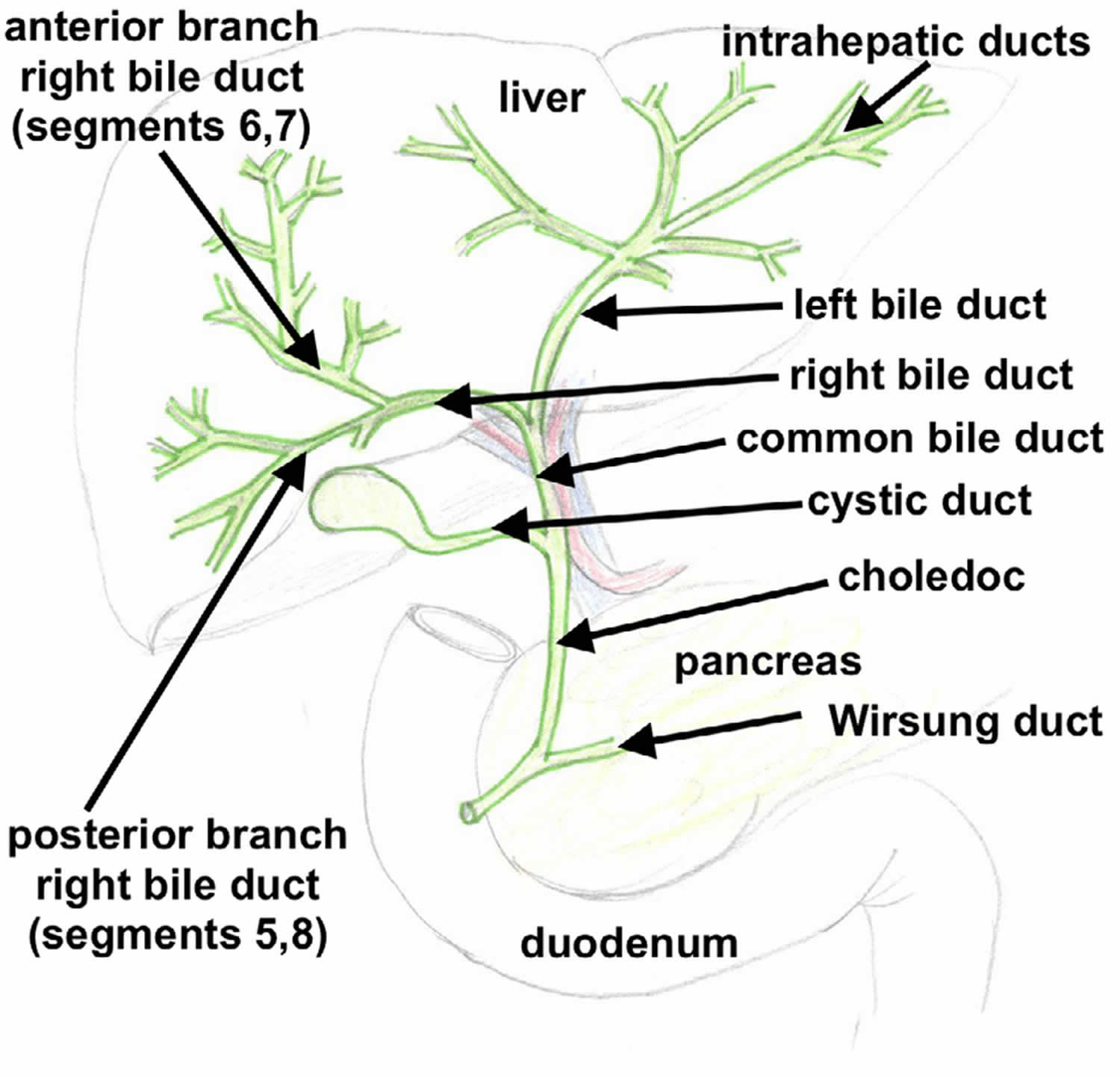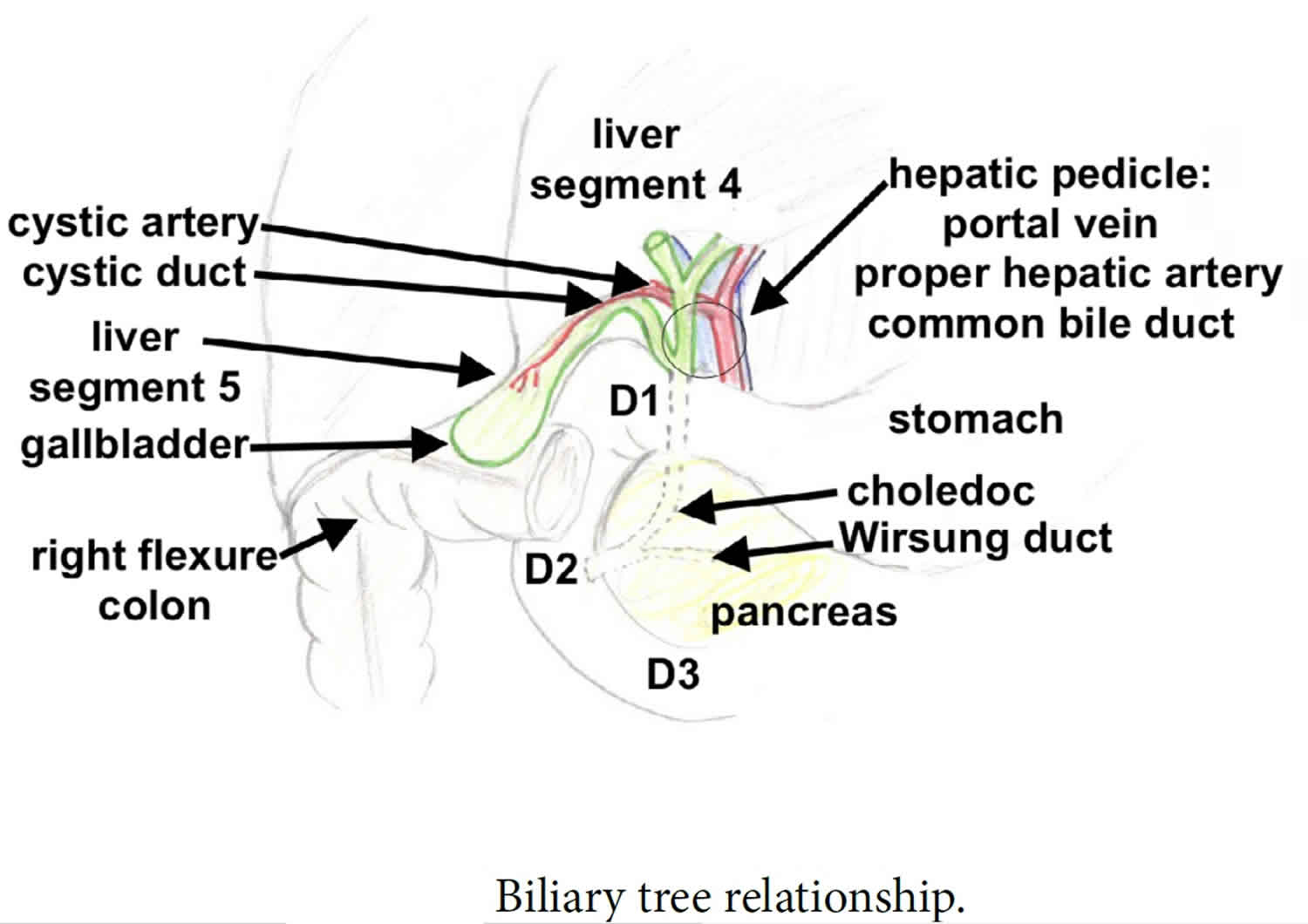Biliary tract
Biliary tract also called biliary tree or biliary system, is the whole network of various sized bile ducts branching through the liver (hepatic duct), gall bladder and bile ducts, and how they work together to make, store and secrete bile. The name biliary tract is used to refer to all of the ducts, structures and organs involved in the production, storage and secretion of bile. Bile, required for the digestion of food, is excreted by the liver into passages that carry bile toward the hepatic duct, which joins with the cystic duct (carrying bile to and from the gallbladder) to form the common bile duct, which opens into the intestine. The path is as follows: bile canaliculi → canals of Hering → interlobular bile ducts → intrahepatic bile ducts → left and right hepatic ducts merge to form → common hepatic duct exits liver and joins → cystic duct (from gall bladder) forming → common bile duct → joins with pancreatic duct → forming ampulla of Vater → enters duodenum.
Bile consists of water, electrolytes, bile acids, cholesterol, phospholipids and conjugated bilirubin. Some components are synthesised by hepatocytes (liver cells), the rest are extracted from the blood by the liver.
Bile is secreted by the liver into small ducts that join to form the common hepatic duct. Between meals, secreted bile is stored in the gall bladder. During a meal, the bile is secreted into the duodenum to rid the body of waste stored in the bile as well as aid in the absorption of dietary fats and oils.
Pressure inside in the biliary tree can give rise to gallstones and lead to cirrhosis of the liver.
The biliary tract can also serve as a reservoir for intestinal tract infections. Since the biliary tract is an internal organ, it has no somatic nerve supply, and biliary colic due to infection and inflammation of the biliary tract is not a somatic pain. Rather, pain may be caused by luminal distension, which causes stretching of the wall.
An obstruction of the biliary tract can result in jaundice, a yellowing of the skin and whites of the eyes.
Figure 1. Biliary tree
Biliary tract system
The biliary tract refers to the path by which bile is secreted by the liver then transported to the duodenum, the first part of the small intestine. A structure common to most members of the mammal family, the biliary tract is often referred to as a tree because it begins with many small branches which end in the common bile duct, sometimes referred to as the trunk of the biliary tree. The duct, the branches of the hepatic artery, and the portal vein form the central axis of the portal triad. Bile flows in the direction opposite to that of the blood present in the other two channels.
The system is usually referred to as the biliary tract or system, and can include the use of the term “hepatobiliary” when used to refer just to the liver and bile ducts. The name biliary tract is used to refer to all of the ducts, structures and organs involved in the production, storage and secretion of bile.
The biliary tract is as follows:
- Bile canaliculi → canals of Hering → intrahepatic bile ductule (in portal tracts / triads) → interlobular bile ducts → left and right hepatic ducts → these merge to form the common hepatic duct, this exits the liver and joins with the cystic duct from gall bladder → together these form the common bile duct which joins the pancreatic duct → these pass through the ampulla of Vater and enter the duodenum.






